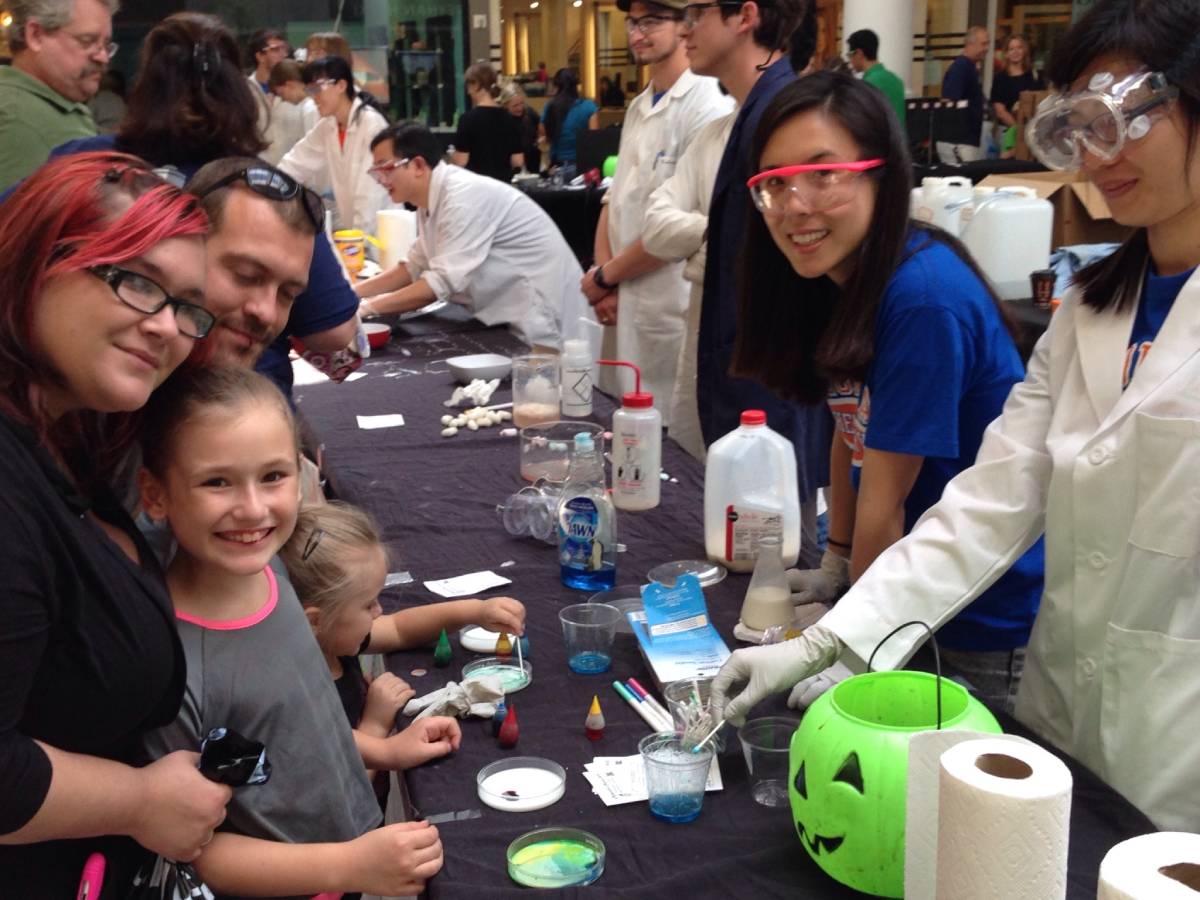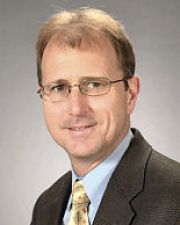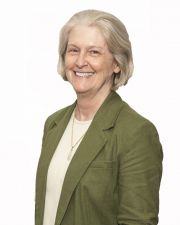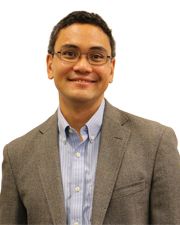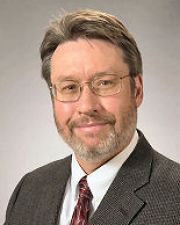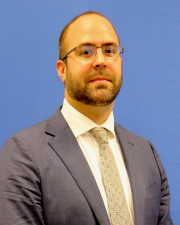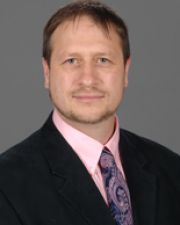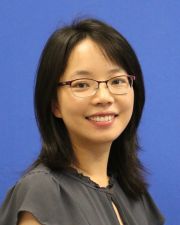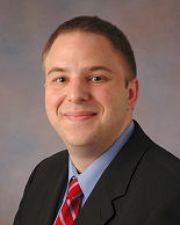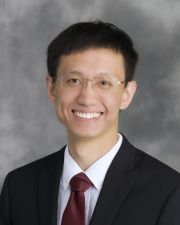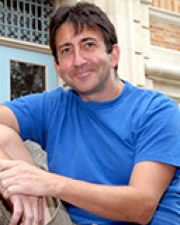analytical | bioanalytical | biochemistry | biophysical | inorganic | nanochemistry | organic | organometallic | physical | polymer | synthesis | theoretical
Analytical
Kari B. Basso
Scientist
John A. Bowden
Associate Professor, Joint Faculty, Chemistry
Y. Charles Cao
Professor
Austin M. Evans
Assistant Professor
Timothy J. Garrett
Associate Professor, Joint Faculty
Fan Hong
Assistant Professor
Charles R. Martin
Crow and Distinguished Professor
Nicolo Omenetto
Research Professor
Boone M. Prentice
Assistant Professor
Anna Brajter Toth
Emeritus
W. David Wei
Professor
Richard A. Yost
Professor Emeritus
Yong Zeng
Colonel Allen R. and Margaret G. Crow Term Professor
analytical | bioanalytical | biochemistry | biophysical | inorganic | nanochemistry | organic | organometallic | physical | polymer | synthesis | theoretical
Back to Top of Page
Bioanalytical
Kari B. Basso
Scientist
John A. Bowden
Associate Professor, Joint Faculty, Chemistry
Y. Charles Cao
Professor
Gail E. Fanucci
Professor
Timothy J. Garrett
Associate Professor, Joint Faculty
Michael E. Harris
Professor
Fan Hong
Assistant Professor
Charles R. Martin
Crow and Distinguished Professor
Boone M. Prentice
Assistant Professor
Anna Brajter Toth
Emeritus
Richard A. Yost
Professor Emeritus
Yong Zeng
Colonel Allen R. and Margaret G. Crow Term Professor
analytical | bioanalytical | biochemistry | biophysical | inorganic | nanochemistry | organic | organometallic | physical | polymer | synthesis | theoretical
Back to Top of Page
Biochemistry
Steven D. Bruner
Professor
Rebecca A. Butcher
Associate Professor
Coray Colina
Professor Emeritus
Matthew Eddy
Assistant Professor
Gail E. Fanucci
Professor
Zhongwu Guo
Professor and Scott Chair
Michael E. Harris
Professor
Fan Hong
Assistant Professor
Sandra Loesgen
Associate Professor
Amal Narayanan
Assistant Professor
Alberto Perez
Assistant Professor
Boone M. Prentice
Assistant Professor
Jeffrey D. Rudolf
Assistant Professor
Jon D. Stewart
Professor
Feng Tang
Assistant Professor
analytical | bioanalytical | biochemistry | biophysical | inorganic | nanochemistry | organic | organometallic | physical | polymer | synthesis | theoretical
Back to Top of Page
Biophysical
Alexander Angerhofer
Professor
Coray Colina
Professor Emeritus
Gail E. Fanucci
Professor
Michael E. Harris
Professor
Valeria D. Kleiman
Professor
Alberto Perez
Assistant Professor
Boone M. Prentice
Assistant Professor
Adrian E. Roitberg
Frank E. Harris Professor
analytical | bioanalytical | biochemistry | biophysical | inorganic | nanochemistry | organic | organometallic | physical | polymer | synthesis | theoretical
Back to Top of Page
Inorganic
analytical | bioanalytical | biochemistry | biophysical | inorganic | nanochemistry | organic | organometallic | physical | polymer | synthesis | theoretical
Back to Top of Page
Nanochemistry
Clifford R. Bowers
Professor
Y. Charles Cao
Professor
Ronald K. Castellano
Steven M. and Rebecca J. Scott Term Professor, Chair
George Christou
Drago and Distinguished Professor
Valeria D. Kleiman
Professor
Mingjie Liu
Assistant Professor
Charles R. Martin
Crow and Distinguished Professor
Daniel A. Savin
Associate Professor
Brent S. Sumerlin
George B. Butler Professor
W. David Wei
Professor
Yong Zeng
Colonel Allen R. and Margaret G. Crow Term Professor
analytical | bioanalytical | biochemistry | biophysical | inorganic | nanochemistry | organic | organometallic | physical | polymer | synthesis | theoretical
Back to Top of Page
Organic
Steven D. Bruner
Professor
Ronald K. Castellano
Steven M. and Rebecca J. Scott Term Professor, Chair
Coray Colina
Professor Emeritus
Tammy A. Davidson
Instructional Professor, Director of Undergraduate Organic Chemistry
Matthew Eddy
Assistant Professor
Austin M. Evans
Assistant Professor
Ion Ghiviriga
Scientist
Zhongwu Guo
Professor and Scott Chair
Stefanie Habenicht
Assistant Instructional Professor
Sandra Loesgen
Associate Professor
Amal Narayanan
Assistant Professor
Jason Portmess
Instructional Professor
Jeffrey D. Rudolf
Assistant Professor
Daniel Seidel
Katritzky Term Professor in Heterocyclic Chemistry, Interim Division Head
Jon D. Stewart
Professor
Brent S. Sumerlin
George B. Butler Professor
analytical | bioanalytical | biochemistry | biophysical | inorganic | nanochemistry | organic | organometallic | physical | polymer | synthesis | theoretical
Back to Top of Page
Organometallic
analytical | bioanalytical | biochemistry | biophysical | inorganic | nanochemistry | organic | organometallic | physical | polymer | synthesis | theoretical
Back to Top of Page
Physical
Alexander Angerhofer
Professor
Rodney J. Bartlett
Graduate Research Professor
Clifford R. Bowers
Professor
Philip J. Brucat
Associate Professor
George Christou
Drago and Distinguished Professor
Coray Colina
Professor Emeritus
Erik Deumens
Scientist
Matthew Eddy
Assistant Professor
Austin M. Evans
Assistant Professor
Gail E. Fanucci
Professor
Valeria D. Kleiman
Professor
Mingjie Liu
Assistant Professor
David A. Micha
Professor Emeritus
Ramon A Miranda Quintana
Assistant Professor
Alberto Perez
Assistant Professor
Adrian E. Roitberg
Frank E. Harris Professor
Daniel A. Savin
Associate Professor
Jason F. Weaver
Affiliate Professor
W. David Wei
Professor
analytical | bioanalytical | biochemistry | biophysical | inorganic | nanochemistry | organic | organometallic | physical | polymer | synthesis | theoretical
Back to Top of Page
Polymer
Ronald K. Castellano
Steven M. and Rebecca J. Scott Term Professor, Chair
Coray Colina
Professor Emeritus
Austin M. Evans
Assistant Professor
Gail E. Fanucci
Professor
Amal Narayanan
Assistant Professor
Daniel A. Savin
Associate Professor
Brent S. Sumerlin
George B. Butler Professor
Kenneth B. Wagener
Butler Professor Emeritus
analytical | bioanalytical | biochemistry | biophysical | inorganic | nanochemistry | organic | organometallic | physical | polymer | synthesis | theoretical
Back to Top of Page
Synthesis
Steven D. Bruner
Professor
Rebecca A. Butcher
Associate Professor
Ronald K. Castellano
Steven M. and Rebecca J. Scott Term Professor, Chair
George Christou
Drago and Distinguished Professor
Austin M. Evans
Assistant Professor
Zhongwu Guo
Professor and Scott Chair
Daniel A. Savin
Associate Professor
Daniel Seidel
Katritzky Term Professor in Heterocyclic Chemistry, Interim Division Head
Jon D. Stewart
Professor
Brent S. Sumerlin
George B. Butler Professor
analytical | bioanalytical | biochemistry | biophysical | inorganic | nanochemistry | organic | organometallic | physical | polymer | synthesis | theoretical
Back to Top of Page
Theoretical
Rodney J. Bartlett
Graduate Research Professor
Coray Colina
Professor Emeritus
Erik Deumens
Scientist
Mingjie Liu
Assistant Professor
David A. Micha
Professor Emeritus
Ramon A Miranda Quintana
Assistant Professor
Alberto Perez
Assistant Professor
Adrian E. Roitberg
Frank E. Harris Professor
